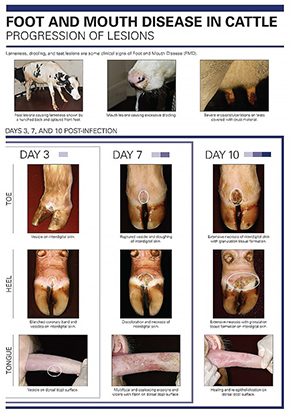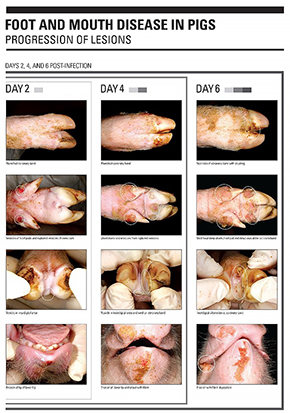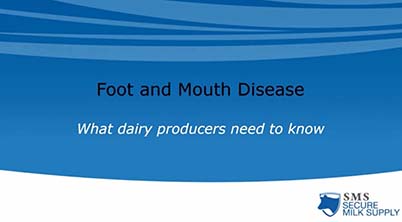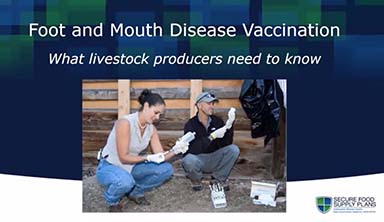Foot and Mouth Disease (FMD) Information
Request to Receive Animal Disease SMS Text Alerts
Recent Foot and Mouth Disease Events in the World
November 2022
FMD remains widespread globally and is endemic in many countries, particularly in Africa, Asia and the Middle East. As of November 2022, there are 182 member countries of the World Organisation for Animal Health (OIE). Of these, 98 countries have no official status, 68 countries are recognized as FMD-free (67 where vaccination is not practiced, 1 where vaccination is practiced), and 13 countries have zones that are FMD-free, with and without vaccination use. The status of 4 of the FMD-free zones where vaccination is not practiced in Kazakhstan have been suspended as of June 9, 2022 as has 1 of the FMD-free zones in Botswana where vaccination is not practiced as of August 18, 2022. North America and the majority of South America, Western Europe, Australia, New Zealand, and most island countries in the Pacific are currently free of the disease.
MoreCountries dealing with recent or on-going outbreaks that have reported notifications or follow-up reports to OIE in the past six months include: Algeria, Botswana, Indonesia, Israel, Libya, Malawi, Mongolia, Mozambique, Namibia, Palestine, People’s Republic of China, South Africa, Zambia and Zimbabwe. Note: there are additional countries where FMD is endemic, but they may not be tracked via OIE’s World Animal Health Information System (WAHIS) reports.
Globally, the FMD situation changes quickly – for the most current information visit OIE/World Animal Health Information System. A list of the OIE FMD-free member countries can be found here. The USDA also evaluates FMD-status for trade purposes; their list of recognized FMD-free countries/regions can be found here.
Disease Information
Foot and Mouth Disease (FMD) is a debilitating and highly contagious viral disease that affects all cloven-hoofed animals, domestic and wild, including cattle, pigs, and sheep. Clinical signs commonly seen in cattle are drooling, lip smacking, and lameness, caused by blisters (vesicles) on the tongue and lips, dental pad, teats and feet. Sheep and pigs have similar, but often less pronounced, clinical signs. While FMD does not pose a public health risk, it has significant economic and international trade impacts.
MoreThe California Department of Food and Agriculture (CDFA) and the United States Department of Agriculture (USDA) work cooperatively to safeguard our food supply and the California agricultural industry. State and federal programs closely monitor and regulate the movement of livestock and animal products. Despite these efforts, the risk of disease introduction is always present. Viruses, bacteria and pests do not respect borders and are capable of entering on imported animals, meat and meat products, travelers’ clothing and shoes, equipment, and other contaminated objects.
Potential Signs of a Foreign Animal Disease
- Sudden, unexplained production and death loss in the herd or flock.
- Severe illness affecting a high percentage of the animals in a herd, flock, or region.
- Blistering around an animal’s mouth, nose, teats, or hooves.
- Unusual ticks or maggots.
International Travelers and Visitors
** Materials have been compiled focusing on the potential livestock disease risks involved with international travel and visitors, and tools and preventive practices producers can use to protect their herds from an FAD like foot and mouth disease: FMD Preparedness and Prevention - International Travel and Visitors Resources .
MoreAnnually, California is host to many visitors who may be traveling from countries where FMD is endemic or currently dealing with FMD outbreaks; some of these visitors request farm tours. Livestock producers should take appropriate precautions for farm tours with international visitors, especially those coming from countries experiencing FMD. Additionally, anyone involved in animal agriculture planning international travel should check the FMD status of the countries to be visited, especially if visiting farms or areas with livestock. Be aware of measures in place for travelers to reduce the disease transmission risk to the United States and of personal precautions to take when you travel internationally. Visit the CDFA biosecurity web page, or see the Traveler Info resources on this page, for more information on biosecurity measures for producers and travelers.
Quick Tips for Travelers:
- Always declare on the Customs form if you have been on a farm or in contact with livestock; and always declare the presence of any meat or dairy product
- If you have visited farms in a country affected with foot and mouth disease (FMD), avoid contact with livestock for at least five (5) days after arrival in the U.S.
- If traveling from to a country affected with FMD, carefully wash and disinfect all clothing and shoes upon return to the U.S.
Quick Tips for Livestock Owners:
- Monitor visitors to your facility (for example, using visitor logs and questionnaires). Keep clean protective clothing and footwear available. Require visitors to wear these items and thoroughly wash their hands prior to entering a livestock facility.
- Do not allow meat, animal products, or food waste from FMD-infected countries to enter your facilities.
- Do not permit clothing, shoes or other articles (such as luggage, cameras, jewelry, and watches) that have been in FMD-affected countries to enter livestock facilities.
- Wash hands thoroughly before and after handling animals. This is especially important between groups of animals from different facilities.
- Always clean and disinfect equipment used at different facilities.
- Discourage close contact or handling of animals by visitors.
Prevention and What You Can Do:
Practicing good biosecurity on your farm, being alert for signs of a foreign animal disease, and taking appropriate precautions for visitors and traveling can all help prevent the introduction of FMD. To learn more about the disease, response to a foreign animal disease outbreak, and FMD vaccination:
In the event of a foreign animal disease outbreak, it is also important to consider continuity of business for producers, transporters, and food processors through response planning. Nationally, Secure Food Supply (SFS) Plans have been developed to provide guidance with these goals in mind. California is working to apply the national SFS guidance and recommendations in order to pre-certify farms for rapid permitted movement and continuity of business for premises with no evidence of infection in the event of a foreign animal disease outbreak. To learn more, visit our California Secure Food Supply page.
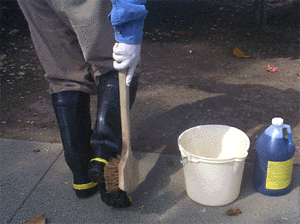
Resources
Traveler Info
Contact Us
CDFA Animal Health and Food Safety Services,
Animal Health Branch
Sacramento, California 95814
Phone: 916-900-5002
Fax: 916-900-5333
Email: ahbfeedback@cdfa.ca.gov


